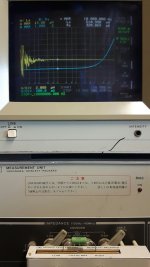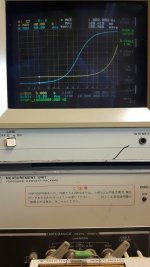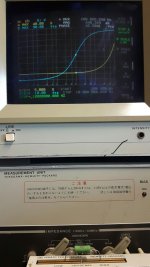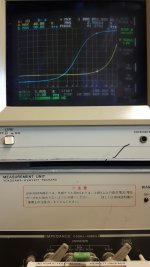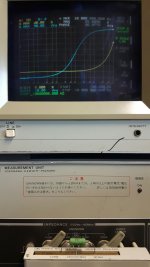Nothing is completely non-inductive! SMT resistors are low-inductance.So excuse my ignorance but are metal film or metal oxide resistors completely non inductive?
Regards
Alan
Cylindrical film resistors can have a spiral track and be more inductive, but not to a level that ever matters for audio. Only WW resistors get to the dozens of turns to hundreds of turns where inductance becomes significant at audio.
Just the leads on a through-hole resistor have more inductance than an SMT device in total (other than an SMT inductor!). The extra inductance of a spiral (well helical to be pedantic) track on a film resistor will not be that much more.
It takes 8µH to develop 1 ohm of reactance at 20kHz, whereas stray inductances are measured in nH.
1mm of pcb track or component lead is about 1nH of inductance.
Amps (especially chip amps) can get upset if the feedback resistor has a long path.
Amps (especially chip amps) can get upset if the feedback resistor has a long path.
Yes, for compensation and feedback networks the frequencies of interest are much higher and inductance will be more important - but only for stability reasons.
These green WW are tough little things but not really resistive above a few 10s of kHz. Allready at 10kHz the phase is 6 degrees. At 100kHz the phase is close to 45degrees. The 'resistor' is trying damn hard to act like an inductor now.
Not sure I'd use this series of WWs anywhere in the audio path, at least when more resistive options exist.
Not sure I'd use this series of WWs anywhere in the audio path, at least when more resistive options exist.
Attachments
These green WW are tough little things but not really resistive above a few 10s of kHz. Allready at 10kHz the phase is 6 degrees. At 100kHz the phase is close to 45degrees. The 'resistor' is trying damn hard to act like an inductor now.
Not sure I'd use this series of WWs anywhere in the audio path, at least when more resistive options exist.
Very interesting indeed. Do you have measurement of other power resistor like the Panasonic ERG? Or Vishay MRA? Thanks.
Hi SemperFi,
What model of HP network analyzer are you using? I have a 4195A with the impedance measuring kit, but no stages and no APC-7 connectors to build one or more.
-Chris
What model of HP network analyzer are you using? I have a 4195A with the impedance measuring kit, but no stages and no APC-7 connectors to build one or more.
-Chris
I have some Welwyn 100r wire wound resistors.
I made up a simple circuit with 100R metal film and 100R Welwyn wire wound as a potential divider. My sig gen goes up to 2MHz and at that frequency there is no phase shift.
I can only conclude the Welwyn WW resistors are wound back on themselves to cancel out inductance.
I made up a simple circuit with 100R metal film and 100R Welwyn wire wound as a potential divider. My sig gen goes up to 2MHz and at that frequency there is no phase shift.
I can only conclude the Welwyn WW resistors are wound back on themselves to cancel out inductance.
Did a quick scan of some more, the ones I found in my drawer. Dont have time to detail them, just look at the pic's name for info.
Generally the lower the resistance the more inductive it becomes (if same construction). Most 100ohm resistors are pretty much 100ohm up till way high, less than 100ohm they tend to become more inductive, above 100ohms they become more capacitive. The parasitics are relative to the resistance, a 1inch long resistor is about X much inductive and as the resistance gets lower the inductive part starts to show more and more, capacitive its the same, starting to dominate as resistance becomes higher.
So some of the 100mohm and 50mohm resistors measured here are pretty good.
Generally the lower the resistance the more inductive it becomes (if same construction). Most 100ohm resistors are pretty much 100ohm up till way high, less than 100ohm they tend to become more inductive, above 100ohms they become more capacitive. The parasitics are relative to the resistance, a 1inch long resistor is about X much inductive and as the resistance gets lower the inductive part starts to show more and more, capacitive its the same, starting to dominate as resistance becomes higher.
So some of the 100mohm and 50mohm resistors measured here are pretty good.
Attachments
-
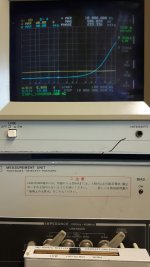 WNCR_50mohm.jpg799.5 KB · Views: 84
WNCR_50mohm.jpg799.5 KB · Views: 84 -
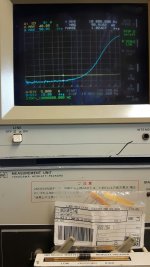 WNCR_100mohm.jpg895.9 KB · Views: 104
WNCR_100mohm.jpg895.9 KB · Views: 104 -
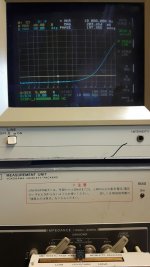 MP850_50mohm.jpg830.5 KB · Views: 95
MP850_50mohm.jpg830.5 KB · Views: 95 -
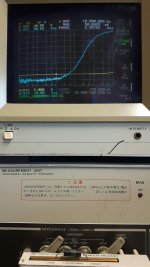 KRL_NP-3_50mohm.jpg844.3 KB · Views: 109
KRL_NP-3_50mohm.jpg844.3 KB · Views: 109 -
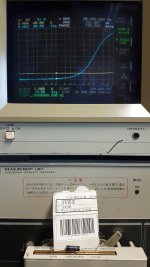 ohmite_150mohm.jpg850.1 KB · Views: 107
ohmite_150mohm.jpg850.1 KB · Views: 107 -
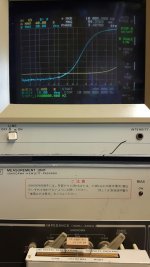 Dale_ceramic_100mohm.jpg848.6 KB · Views: 116
Dale_ceramic_100mohm.jpg848.6 KB · Views: 116 -
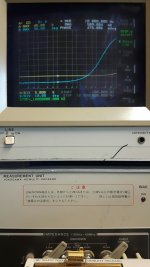 CGS_ALU_510mohm_short.jpg818 KB · Views: 118
CGS_ALU_510mohm_short.jpg818 KB · Views: 118 -
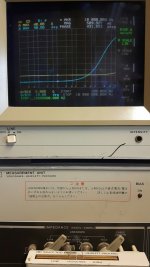 WNCR_50mohm_longleads.jpg873 KB · Views: 95
WNCR_50mohm_longleads.jpg873 KB · Views: 95
Vishay do no inductive and non magnetic wire wound resistors.
https://www.vishay.com/docs/31801/mra.pdf
https://www.vishay.com/docs/31801/mra.pdf
Vishay do no inductive and non magnetic wire wound resistors.
https://www.vishay.com/docs/31801/mra.pdf
Where do we get those? It seems to me they are made to order and must be very expencive.
Too bad carbon composition resistors are so poor in tempco and noise b/c they are nonmagnetic, noninductive, and pulse tolerant.
The caddock mp850 series is noninductive and precise but poor pulse tolerant.
These are about the most obviously audible resistors in an amp. If one's ears are of course inclined to hear such things. Much of the bad vibe of paralleled outputs can be attributed to crappy oxide resistors.
Take your nonsense to a cable thread .
With emitter resistors being of such low value, like 100 milliohms of less, I think that inductance is pretty small and negligible in such low value wire-wounds. I have used standard 5 watt ones in BJT amps and had no problems at all with them at all.
Hi SemperFi,
They are not expensive.
-Chris
Digikey.Where do we get those? It seems to me they are made to order and must be very expencive.
They are not expensive.
-Chris
The opposite is true: inductance is most likely to be a problem with low value resistors. Capacitance can be a problem with high value resistors, although in both cases this does not affect audio too much.gellings said:With emitter resistors being of such low value, like 100 milliohms of less, I think that inductance is pretty small and negligible in such low value wire-wounds.
Great reasistors for emiters or source position in the amplifiers after my experience
MRA-05R4700FE12 Vishay / Mills | Mouser
Futaba MPC74 metal plate cost less and are fantastic indeed.
🙂 Best regards
MRA-05R4700FE12 Vishay / Mills | Mouser
Futaba MPC74 metal plate cost less and are fantastic indeed.
🙂 Best regards
I have some Welwyn 100r wire wound resistors.
I made up a simple circuit with 100R metal film and 100R Welwyn wire wound as a potential divider. My sig gen goes up to 2MHz and at that frequency there is no phase shift.
I can only conclude the Welwyn WW resistors are wound back on themselves to cancel out inductance.
Hi Nigel,
How can we detect phase shift with simple scope and siggen? Perhaps you care to explain. Thanks.
Hi Nigel,
How can we detect phase shift with simple scope and siggen? Perhaps you care to explain. Thanks.
Very easily. I just made a potential divider with 100r metal film resistor and 100r wire wound resistor.
I put one scope lead on input and another at the connection of the two resistors and compared relative phases on the scope at 2MHz.
No shift in phase at all.
An externally hosted image should be here but it was not working when we last tested it.
Very easily. I just made a potential divider with 100r metal film resistor and 100r wire wound resistor.
I put one scope lead on input and another at the connection of the two resistors and compared relative phases on the scope at 2MHz.
No shift in phase at all.
Interesting, will try. Thanks.
- Home
- Amplifiers
- Solid State
- Output stage emitter resistors
